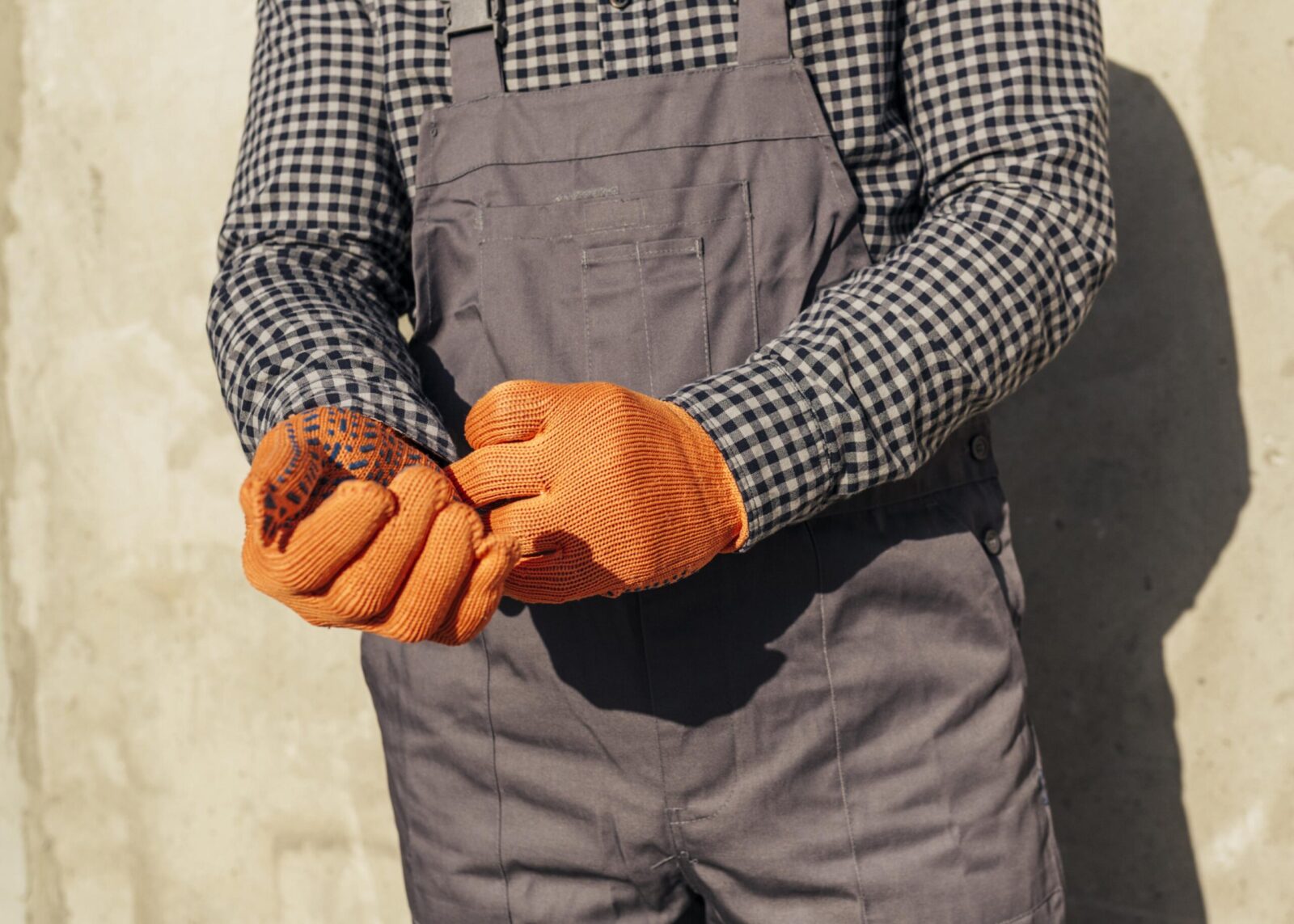
Arc Flash Gloves: Selecting the Right Protection
Choosing the right Arc Flash Gloves is key to ensuring your safety in high-risk environments like electrical maintenance or construction....

Get 20€ off on your first order!
Choosing the right cleanroom and sterile gloves is essential for maintaining strict hygiene and preventing contamination in controlled environments. Whether you work in pharmaceuticals, electronics manufacturing, or healthcare, selecting the appropriate gloves can enhance safety and performance. By reading this guide to the end, you’ll gain the confidence to choose the best gloves for your needs and resolve any questions about industry standards, material selection, and sizing.
Cleanroom gloves, also referred to as sterile gloves, differ from standard single-use gloves in their manufacturing and application standards.
While standard single-use gloves are designed for general hygiene or low-risk tasks, cleanroom and sterile gloves are produced in controlled environments to minimize particulates and meet strict sterility requirements, ensuring optimal safety in contamination-sensitive industries.
These gloves are typically used in industries where even the slightest contamination can compromise product integrity or safety. They are manufactured in controlled environments to minimize particulates and are often tested for compliance with standards such as EN ISO 374-5 for microbial protection.
To explore specific options, browse our cleanroom & sterile gloves product category.

The material of the gloves significantly impacts their durability, comfort, and compatibility with specific applications.
| Material | Features | Best For |
| Nitrile | Chemical-resistant, puncture-proof | Pharmaceuticals, electronics |
| Latex | Highly elastic, tactile sensitivity | Healthcare, precision work |
| Vinyl | Affordable, less durable | Low-risk environments |
For more on nitrile gloves, here’s a quick summary: Nitrile gloves are durable, puncture-resistant, and chemical-resistant, making them ideal for cleanroom environments and industries like pharmaceuticals. They are also latex-free, reducing the risk of allergic reactions. For further details, visit our Nitrile Gloves Buyer’s Guide.
Ensuring a proper fit enhances dexterity and reduces fatigue. Use this general sizing chart:
| Glove Size | Palm Width (mm) |
| Small | 80-90 |
| Medium | 90-100 |
| Large | 100-110 |
| X-Large | 110-120 |
When selecting gloves, ensure compliance with industry-specific standards:
Refer to reliable sources such as the European Committee for Standardization (CEN) to ensure the gloves meet critical quality and safety benchmarks. These standards help guarantee that the gloves are suitable for contamination-sensitive environments by specifying requirements for sterility, particulate control, and chemical resistance.
While cleanroom gloves are critical, additional tools can support a sterile environment by reducing contamination risks. For example, surface cleaners help eliminate microbial presence on work surfaces, ensuring no residual contaminants compromise the environment.
Similarly, degreasers are essential for removing stubborn residues from machinery, which can harbor particles that might disrupt sterility. Using tools like vinyl gloves for less critical tasks can also prevent unnecessary usage of high-cost sterile gloves.:
Selecting gloves from reliable suppliers ensures the highest standards of quality and compliance. Below are some of the top European suppliers of cleanroom and sterile gloves, along with links to their catalogs:
For a complete list of suppliers, explore more here.
We hope this guide has provided you with valuable insights into selecting the right cleanroom and sterile gloves, addressing key factors such as material compatibility, sterility, and compliance with industry standards. Whether you’re ensuring safety in pharmaceutical environments, precision in electronics manufacturing, or sterility in healthcare, we’re here to support your needs with confidence and expertise.
Explore the full range of Cleanroom & Sterile Gloves on Droppe, where trusted brands like Ansell, Franz Mensch, and Unigloves offer top-tier solutions for contamination-sensitive environments.
Have questions or need personalized advice to find the perfect gloves? Don’t hesitate to contact us—we’re always here to help you maintain safety and precision in every task.
– The Droppe Team
Cleanroom environments are classified by the number of particles allowed per cubic meter of air (e.g., ISO Class 5). Check the glove manufacturer’s specifications for compatibility with your cleanroom classification. Look for compliance with ISO 14644-1 standards and ensure they meet particulate and sterility requirements.
The shelf life varies depending on the material and storage conditions. Nitrile and latex gloves typically have a shelf life of 3-5 years when stored in a cool, dry place away from direct sunlight. Always check the manufacturer’s expiration date.
Cleanroom and sterile gloves are generally designed for single use to prevent contamination. Reusing gloves can compromise sterility and increase the risk of particulate transfer. For cost-effective solutions, consider using non-sterile gloves for low-risk tasks.
Disposal procedures depend on your industry. In healthcare, contaminated gloves should be disposed of as medical waste, following local regulations. For other industries, ensure proper disposal in line with environmental guidelines to prevent chemical or biological problems.
Disposal procedures depend on your industry. In healthcare, contaminated gloves should be disposed of as medical waste, following local regulations. For other industries, ensure proper disposal in line with environmental guidelines to prevent chemical or biological problems.
Powdered gloves are coated with cornstarch for ease of use, but they are not recommended for cleanroom applications due to the potential for powder-related contamination. Always opt for powder-free gloves for cleanroom use.
Yes, if chemicals are involved, ensure the gloves are chemical-resistant. Nitrile gloves are a popular choice for their resistance to many chemicals. Refer to the glove’s chemical compatibility chart to confirm suitability for your specific needs.
Select gloves that meet both cleanroom classification standards (e.g., ISO 14644-1) and chemical resistance standards (e.g., EN ISO 374-1). Look for certifications on the packaging or product specifications.
Immediately remove the torn glove, discard it, and replace it with a new one. Ensure proper donning techniques to minimize the risk of tearing, especially with thinner gloves.
For individuals with latex allergies, nitrile gloves are a safe and effective alternative. They provide similar tactile sensitivity and durability without the risk of allergic reactions.
Only open glove packaging in a clean, controlled environment. Avoid touching the gloves with bare hands or placing them on contaminated surfaces. Use proper donning techniques to maintain sterility during use.
Standard cleanroom gloves are not designed for thermal protection. If handling hot or cold materials, consider using gloves specifically designed for thermal resistance over the cleanroom gloves, as long as this does not compromise sterility.
To reduce hand fatigue, ensure the gloves fit properly and choose materials with good elasticity and comfort, such as latex or soft nitrile. For extended use, consider gloves with ergonomic designs and ensure regular breaks.
Thank you! You've signed up for our newsletter.



















Choosing the right Arc Flash Gloves is key to ensuring your safety in high-risk environments like electrical maintenance or construction....

Choosing the right Rubber Insulating Gloves is essential for safety in electrical work, but with so many options, it can...

Are you looking for the right electrical insulating gloves to ensure your safety? This guide will help you understand the...

Choosing the right Arc Flash Gloves is key to ensuring your safety in high-risk environments like electrical maintenance or construction....

Choosing the right Rubber Insulating Gloves is essential for safety in electrical work, but with so many options, it can...

Are you looking for the right electrical insulating gloves to ensure your safety? This guide will help you understand the...
Get 20€ off on your first order!
Save 30% by buying directly from brands, and get an extra 10€ off orders over €100
Save 30% by buying directly form brands, and get an extra 10€ off orders over €100